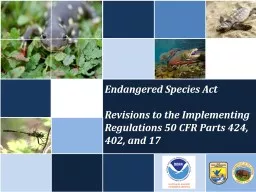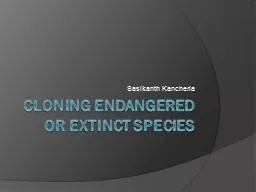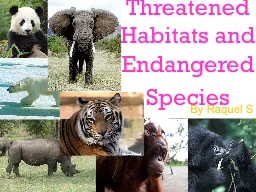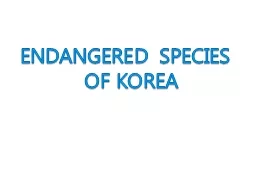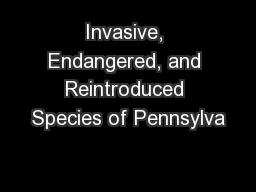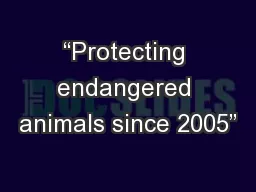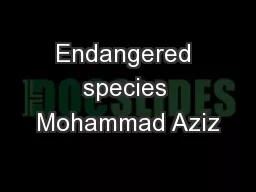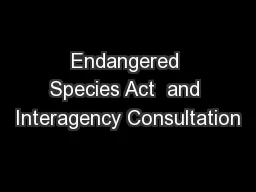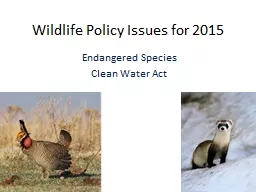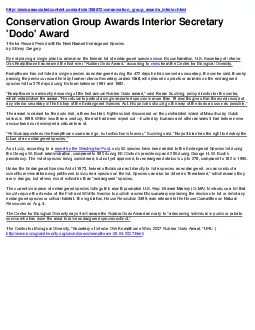PPT-Endangered Species Act
Author : phoebe-click | Published Date : 2019-11-29
Endangered Species Act Revisions to the Implementing Regulations 50 CFR Parts 424 402 and 17 Background Section 4 of the Act Provides for how to add and remove species
Presentation Embed Code
Download Presentation
Download Presentation The PPT/PDF document "Endangered Species Act" is the property of its rightful owner. Permission is granted to download and print the materials on this website for personal, non-commercial use only, and to display it on your personal computer provided you do not modify the materials and that you retain all copyright notices contained in the materials. By downloading content from our website, you accept the terms of this agreement.
Endangered Species Act: Transcript
Download Rules Of Document
"Endangered Species Act"The content belongs to its owner. You may download and print it for personal use, without modification, and keep all copyright notices. By downloading, you agree to these terms.
Related Documents

